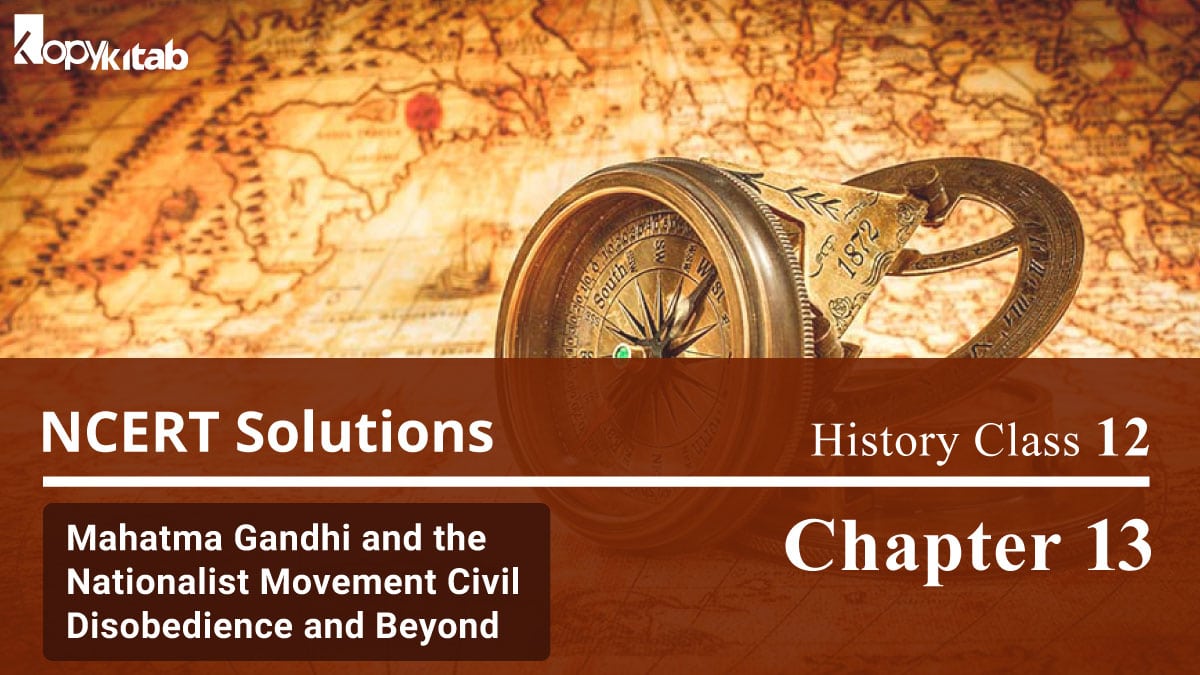NCERT Solutions For Class 12 History Chapter 13 Mahatma Gandhi and the Nationalist Movement Civil Disobedience and Beyond encompass all the questions which may be probably be had in NCERT. All the solutions furnished in NCERT Solutions For Class 12 History Chapter 13 Mahatma Gandhi and the Nationalist Movement Civil Disobedience and Beyond are given properly so that students will now no longer have hassle on the equal time as getting ready. With the assist of those solutions, you could efficiently get records in superior concepts.
Download Free PDF NCERT Solutions For Class 12 History Chapter 13 Mahatma Gandhi and the Nationalist Movement Civil Disobedience and Beyond
These CBSE Class 12 History solutions are created through our specialists so you can without hassle rely upon them. Class 12 CBSE Board NCERT Solutions is probably very useful on your board exams and lets you in developing your conceptual records.
NCERT Solutions For Class 12 History Chapter 13 Mahatma Gandhi and the Nationalist Movement Civil Disobedience and Beyond
- Mahatma Gandhi is the maximum influential and respected of all of the leaders who participated withinside the freedom battle of India.
- It becomes in South Africa he first targeted the specific strategies of nonviolent protest called Satyagraha and promoted concord among religions.
- His first fundamental public look becomes at the outlet of the Banaras Hindu University in February 1916.
- He effectively-prepared Satyagraha at Champaran (Bihar in 1917) to ameliorated the circumstance of the peasants who cultivated indigo.
- In 1918, he began out a satyagraha to grow the wages of Ahmedabad mill employees with the aid of using 35 in keeping with cent
- In 1918, he additionally organized a peasant movement to remit the sales in Kheda.
- In 1919, Gandhiji referred to as a national marketing campaign towards the “Rowlatt Act”. It becomes the Rowlatt Satyagraha that made Gandhiji a reality country-wide leader.
- In 1920, after Jalianwala Bagh Massacre he referred to as a marketing campaign of non-cooperation with British Rule and joined arms with the Khilafat movement.
- On 6 April 1930 broke the salt regulation with the aid of using creating a fistful of salt.
- In 1947 Lord Mountbatten become appointed as the viceroy.
- 15 August 1947- Formal switch of power, the statement of partition and India were given her independence.
Access Other Chapters Link of NCERT Solutions for Class 12 History
NCERT Solutions For Class 12 History Chapter 1 – Bricks, Beads, and Bones The Harappan Civilisation
NCERT Solutions For Class 12 History Chapter 2 – Kings, Farmers and Towns Early States and Economies
NCERT Solutions For Class 12 History Chapter 3 Kinship, Caste and Class Early Societies
NCERT Solutions For Class 12 History Chapter 7 – An Imperial Capital: Vijayanagara
NCERT Solutions For Class 12 History Chapter 9 Kings and Chronicles The Mughal Courts
NCERT Solutions For Class 12 History Chapter 14 – Understanding Partition Politics, Memories, Experiences
NCERT Solutions For Class 12 History Chapter 15 – Framing the Constitution The Beginning of a New Era
We have included all the information regarding NCERT Solutions For Class 12 History Chapter 13 Mahatma Gandhi and the Nationalist Movement Civil Disobedience and Beyond. If you have any query feel free to ask in the comment section.
FAQ: NCERT Solutions For Class 12 History Chapter 13
Can I download NCERT Solutions For Class 12 History Chapter 13 for free?
Yes, you can download NCERT Solutions For Class 12 History Chapter 13 Mahatma Gandhi and the Nationalist Movement Civil Disobedience and Beyond for free.
When did quit India Movement released?
On 9 August 1942 – The quit India Movement became released via way of means of Gandhiji. He alongside all distinguished leaders became despatched to jail.
Are NCERT Solutions For Class 12 History Chapter 13 Mahatma Gandhi and the Nationalist Movement Civil Disobedience and Beyond enough for the preparation of board exams?
Yes, you can refer to these NCERT Solutions For Class 12 History Chapter 13 Mahatma Gandhi and the Nationalist Movement Civil Disobedience and Beyond, but also read NCERT books for better understanding.
When did Gandhi-Irwin Pact signed?
In 1931, the ‘Gandhi-Irwin Pact’ became signed via way of means of the phrases of which civil disobedience became known as off and all prisoners have been released.
From where I can get all the solutions for NCERT history Class 12?
You can refer to above article.
When did Quit India Movement released?
On 9 August 1942 – The quit India Movement became released via way of means of Gandhiji. He alongside all distinguished leaders became despatched to jail.
Are these NCERT Solutions For Class 12 History Chapter 13 Mahatma Gandhi and the Nationalist Movement Civil Disobedience and Beyond reliable for studying?
Yes, you can easily rely on these NCERT solutions for Class 12.
